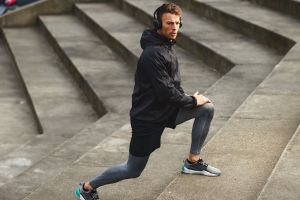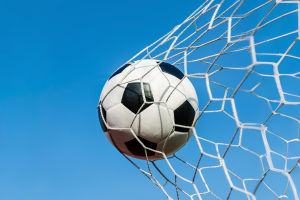You crushed your workout yesterday. Maybe it was leg day, or maybe you just got back into exercise after a long break. You felt strong, proud, and motivated. But then — surprise! You wake up the next morning and every step feels like a challenge.
We've all been there. So why exactly do we feel this kind of muscle soreness after the workout, not during? This common issue actually has a name: Delayed Onset Muscle Soreness, or DOMS for short. Let's break down what's really going on in our bodies when we feel this kind of soreness.
What causes the soreness?
Contrary to what we might think, this soreness isn't caused by “bad” exercise. In fact, it usually means our muscles are responding to a new challenge — whether that's a harder workout, a longer session, or trying a new movement.
When we exercise, especially if we're doing resistance training or something high intensity, we create tiny microscopic tears in our muscle fibers. This is totally normal. These little tears are what stimulate muscle repair and growth. As the muscles heal, they get stronger — but in the meantime, that healing process can cause soreness.
Why does it take a day to kick in?
DOMS usually shows up 12 to 24 hours after we work out, and it can last for up to 72 hours. That delay happens because it takes some time for our body to react to the small damage done to the muscles.
Inflammation increases in the area, and our body starts sending healing signals. That's when we start to feel the tightness, tenderness, or pain — especially when we move or stretch the sore muscles.
Who gets it more?
We tend to feel DOMS more when we:
• Try a new kind of workout
• Increase the intensity or duration
• Focus on eccentric movements (like lowering a weight slowly or running downhill)
Even seasoned athletes feel sore when they try something unfamiliar. So it's not about fitness level — it's about how much our muscles are being challenged in a new way.
Is soreness a good or bad thing?
A little soreness is actually a sign of progress — it means our muscles are being pushed to adapt and grow. But too much soreness, or soreness that stops us from moving properly, can be a sign that we may have overdone it.
The key is to find balance. We want to challenge ourselves, but not to the point where we can't recover well. Regular, consistent training will help our body adapt more easily over time.
How can we reduce the soreness?
Here are some practical tips we can try to ease the discomfort:
• Warm up properly before exercising
• Cool down and stretch afterward
• Stay hydrated — water helps flush out waste from the muscles
• Get enough rest and sleep for better muscle repair
• Use a foam roller or do light massage to improve blood flow
• Try light movement like walking or gentle stretching to loosen up
One important reminder: soreness doesn't mean we should stop moving completely. In fact, gentle movement helps increase circulation and can actually speed up recovery.
Should we still work out when sore?
If the soreness is mild, it's usually okay to keep moving. We can choose low-impact activities like walking, cycling, or stretching. If the soreness is more intense, it's smart to rest the sore muscles but still stay active with other parts of the body.
Listening to our body is key. If we feel sharp pain (not just soreness), that's a sign to stop and maybe get things checked out.
Let's work through soreness smartly
Soreness after a workout isn't something to fear — it's part of the journey. It reminds us that we're improving, growing, and challenging ourselves. But at the same time, we need to recover well, train smart, and give our body the care it needs.
Lykkers, what's your recovery routine?
Do you have any go-to tricks for handling soreness? Maybe a favorite stretch, a warm shower, or a foam rolling session? Share your recovery hacks with us — we're all in this together, sore muscles and all!


